Los Angeles has a colorful and raucous past and drinking alcohol has been a big part of it. I attended a lecture about the history of booze in L.A. that took place in an old Hollywood bar.
Museum of the American Cocktail
The event took place at the Lost Property Bar on Hollywood and Vine, by the Museum of the American Cocktail. It is a division of the National Food & Beverage Foundation. The lecture was titled “Imbibing LA: Boozing it Up in the City of Angels – From Sacred Wines to Tiki Bars”
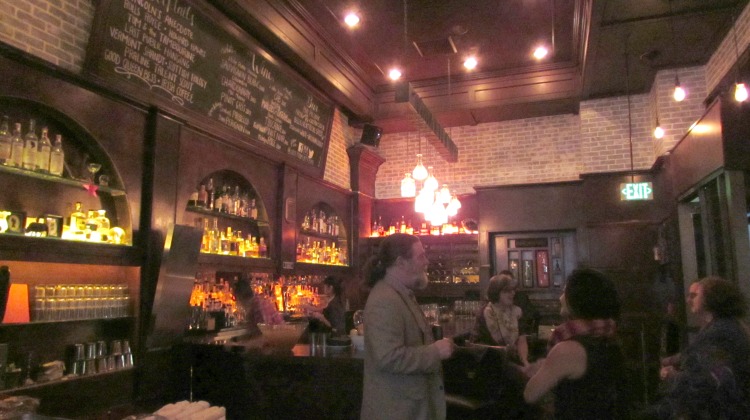
Our lively and alcohol-influenced discussion was led by culinary historian Richard Foss. He’s also a science fiction writer, theater director, restaurant reviewer, and author of “Food in the Air and Space: The Surprising History of Food and Drink in the Skies.”
He took us through the beginnings of the California wine industry, the first breweries in Downtown Los Angeles, speakeasies during Prohibition, and Post Depression-era Polynesian Palaces.
During the evening, our group of eager food and booze aficionados was served a tasty array of food paired with Los Angeles-inspired vintage cocktails. They included:
- Jerry Thomas Orange Punch from Jerry Thomas’ 1887 Bartenders Guide
- Bamboo cocktail made with the addition of orange oil – late 1800’s
- Wiz Bang Cocktail – made with Dutch gin, ginger, cider, and nutmeg
- and a Don the Beachcomber concoction with a name I didn’t catch. (By that point I was getting loopy)
Foss told us that all food and drink have a cultural context whether it comes from a religious ritual or otherwise.
Take a tour of L.A. Hidden Bars and Speakeasies by clicking here.
Wine production in Los Angeles started at its local missions
The Native Californian Indians had never tasted alcohol until the Spaniards arrived with the Franciscan priests who built 21 missions along the El Camino trail from San Diego to Sonoma.
The first bottles of wine came from Spanish grapes at the San Juan Capistrano Mission in 1778 for religious ceremonies. Spain didn’t want the inhabitants of Baja and Alta California to outdo them in winemaking and only sent over its worst grapes, banning the rest from import. They hybridized the grapes at the San Gabriel and San Fernando Missions and they became known as “Mission Grapes.” The missionaries produced it expressly for religious purposes but also sold a great deal of it.
Seen on a placard at the San Fernando Mission:
Grape Vines originally from Spain via Baja, California were planted at this mission in the year 1797. By 1832, 32,000 vines were bearing a large bluish-black grape. The red wine was similar to Claret.
Grapes were brought in by ox cart and dumped into a large vat. There they were pressed on foot. Juice from the pipe at the base of the vat was stored in ox-hides in the cellar.
The wine was used:
- with meals
- as medicine
- for Mass
- in exchange for provisions.
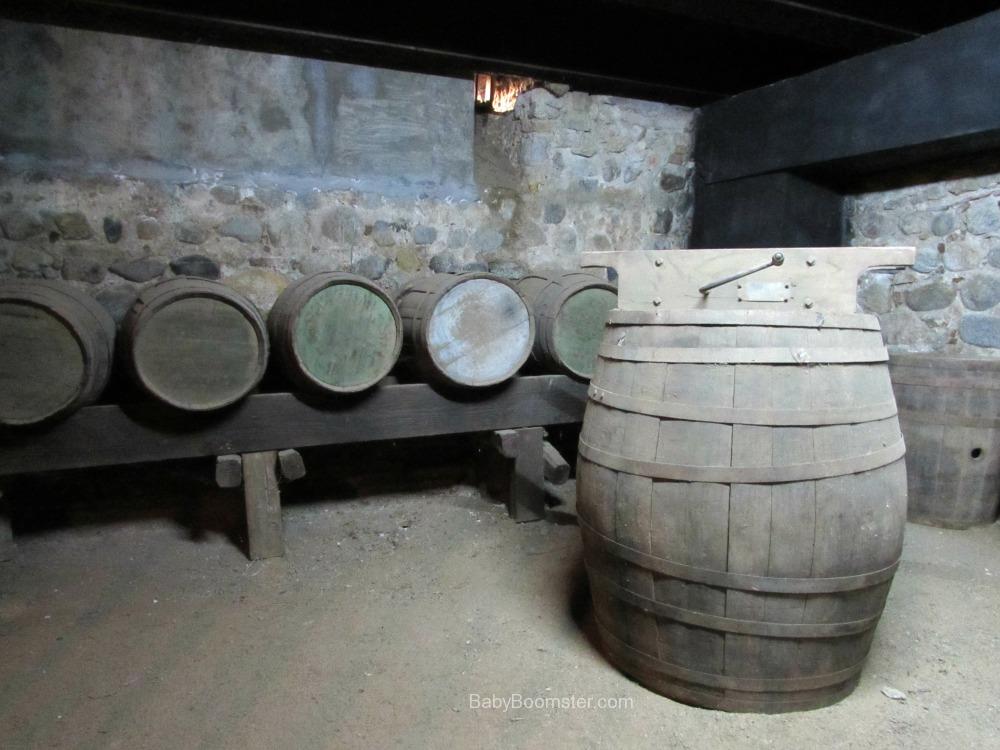
The grapevines were interspersed with olive trees that acted as natural trellises.
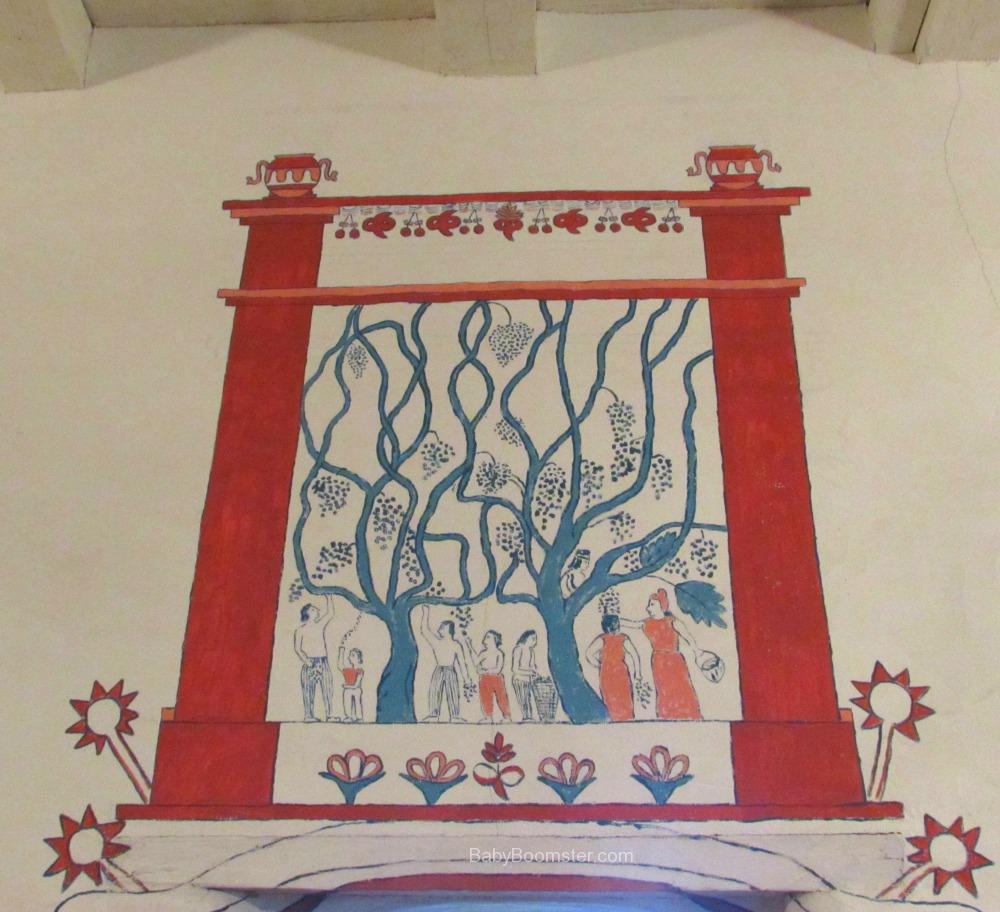
The first wine style was named after the city of Los Angeles and was called “Angelica.” The priests took Mission grapes and added sugar to make the wine taste more like sherry. It was used as altar wine or as an apéritif. Angelica is not readily available anymore but can be purchased as Ancient Angelica from the Galleano Winery in Cucamonga Valley.
Spanish Sangria wasn’t served in California except for foreign visitors to make them feel more at home. Spain eventually lost California to Mexico but Mexican residents didn’t want European immigrants to come in from the U.S. They only invited Catholics who were loyal to Mexico, which included some from France.
The first commercial winery in Los Angeles
Jean-Louis Vignes was a Frenchman who had been living in the Sandwich Islands. He arrived at Pueblo de Los Angeles in 1827 and started California’s first non-religious winery where Union Station is now in 1831. He called it “El Aliso” because a huge sycamore tree grew on the property. Aliso is French for Sycamore.
Angelinos called Vignes “Don Luis Del Aliso” even though he was French. He imported the first Bordeaux grapes from France and they flourished in the city’s temperate weather. The winery was surrounded by a wall for protection and became the site of treaties and feasts with Native Indians. It also entertained luminaries like General William Tecumseh Sherman. Samples of El Aliso wine were sent to President Tyler.
Vignes St in downtown Los Angeles near Union Station was named after Jean-Louis Vignes.
Vignes exported wine to Santa Barbara, Monterey, and San Francisco in 1842, as there were no vineyards up there at the time. He sold El Aliso in 1855 to his nephews Pierre and Jean-Louis Sanisevain. They produced Madeira, brandy, and wine bitters.
Their attempt to produce champagne proved to be a disaster as Los Angeles summers were too hot and there were no caves to store the bottles. The bottles blew up, the brothers lost money and the winery was sold in 1874. They left Los Angeles and moved to Cucamonga where they continued to produce wine.
The San Antonio Winery was founded in 1917 on Lamar Street by Santo Cambianica, who had immigrated from Berzo San Fermo, Italy. It survived Prohibition because it was granted permission to make wines for sacramental and ceremonial purposes. It’s the oldest-producing winery in Los Angeles and has been in business for over 100 years.
Most wine production in California shifted to Northern California after the Civil War.
The first Downtown Los Angeles breweries
There were around 35 breweries in the early days of Los Angeles owned by German and Bavarian immigrants.
The oldest one was located at 20 3rd St. near Main and was called The New York Brewery. (1854-1887) Christopher and/or Henry Kuhn (not sure) are listed as an owner. It was later taken over by Philip Lauthlater.
John Murat established the Gambrinus Brewery at 1st and Los Angeles St in 1856. The beer they produced was described as swill. A new owner took over in 1874, who may have been Henry Lemmert. The brewery was moved to 2nd and Spring, near the L.A. Times Building, and was renamed City Brewery and Saloon. That brewery closed the same year but Lemmert partnered up with a man named Schwartz and ran a brewery from 1874 – 1877. It was taken over by Louis Schwartz from 1877-1879. Mr. Schwartz was mentioned in a YouTube video by a woman who lived in downtown Los Angeles during that time.
Reference about old L.A. Breweries here.
The Philadelphia Brew House was installed at the El Aliso winery site in 1874. Joseph Maier (from Germany) and George Zobelein (from Bavaria) bought it in 1882 and renamed it Maier & Zobelein. They extended it along Commercial St to Vignes.
When Joseph Maier died in 1904 he left his share to his sons. A legal dispute began between the sons and Zobelein causing them to part company. Zobelein bought off the Maier & Zobelein Brewery in 1907.
The Los Angeles Brewing Company opened in 1897 at 1920 North Main St. in Lincoln Heights co- owned by P. Max Kuehnrich and Edward Mathie. Zobelein purchased it in 1907. He developed a Pilsner called Eastside because the brewery was in East Los Angeles. He also created Old Mission Malt, and Old Tap Lager.
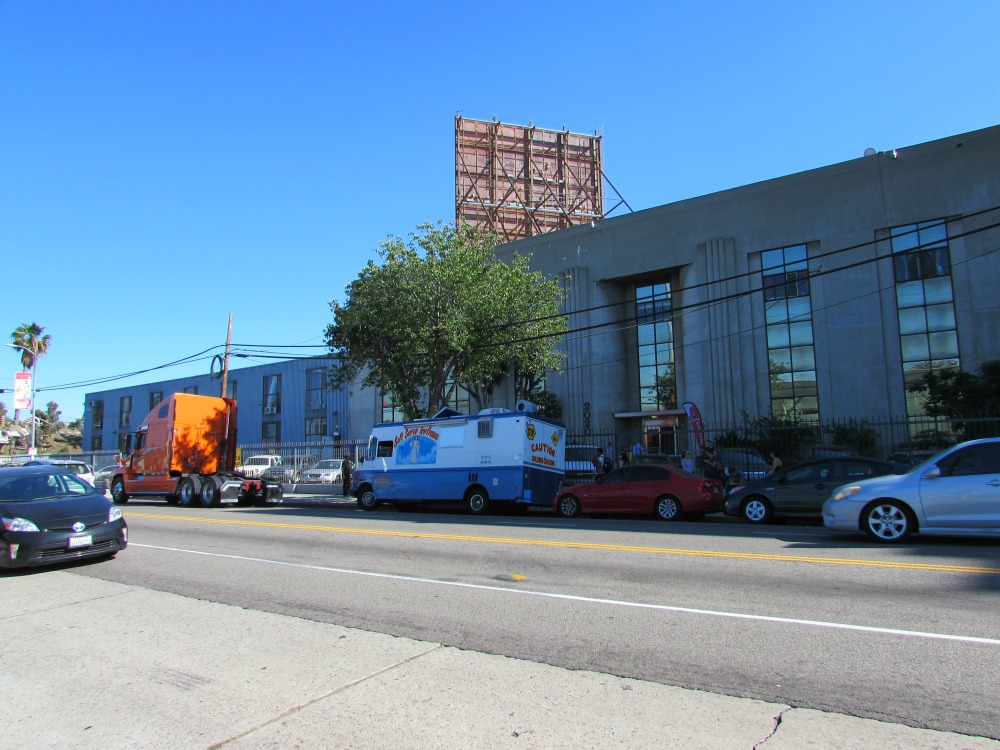
When drinking in Los Angeles came to a standstill during Prohibition, Eastside Brewery made cider, near beer, pineapple juice, and root beer. It was known as Zesto Beverage Company from 1920 – 1926.
Zobelein restarted the brewery in 1933. Director Walter Huston and actress Jean Harlow christened it by breaking their first bottle over a truck but Zobelein died three years later in 1936.
Pabst acquired the brewery in 1953 and it closed in 1979. Some of its buildings are still standing and it is now the Brewery Arts Colony and Artist’s lofts.
Most of the beer made in Los Angeles during the late 19th and early 20th centuries was subpar because the weather isn’t as conducive to brewing beer as it is for wine.
It’s said, “it was so weak you couldn’t get drunk.”
If you’re in Downtown Los Angeles near Little Tokyo, you may want to stop at Angel City Brewery at 216 S Alameda St, Los Angeles, CA 90012. It is located at the John A. Roebling Building (1913) in the LA Arts District. You can’t miss its graffiti and mural-embellished building which has a colorful history. Drink craft beers and enjoy food from gourmet food trucks on long tables with the locals.
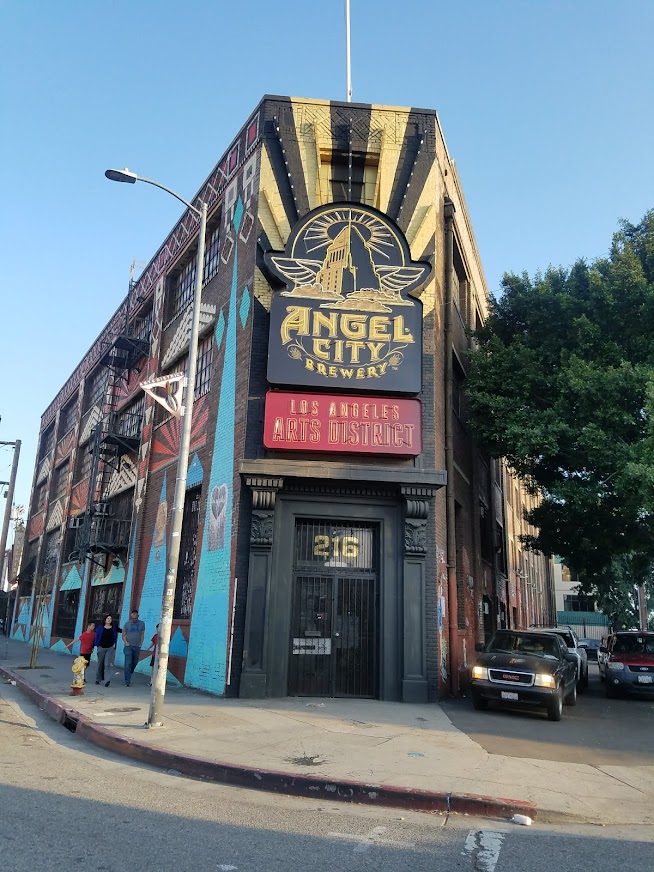
Booming in LA was selected by Redfin as a top Los Angeles, CA local brewery expert. See the Redfin article we were featured in: Los Angeles Breweries that Raise the Bar: Here’s What to Know about the Local Brew Scene | Redfin
Bars, Speakeasies, and Prohibition
One of the first bars in downtown Los Angeles was called The Union Bar. It was located at 3rd and Central.
Prohibition clobbered the Los Angeles economy because much of it depended on alcohol consumption. The N. Cucamonga Winery poured gallons of wine down the sewers in Downtown Los Angeles.
That didn’t stop Los Angeles from building a thriving underground economy. Actors in the entertainment industry kept the party going and speakeasies thrived underground. Los Angeles still has miles of tunnels where hooch was stored and transported that go right up to City Hall.
Wineries and breweries covered their bases as well. They made “marinades” “tonics” “near beer” and other products that were overtly alcoholic. Some even sold grape and yeast kits so people could make wine and beer at home. The sales of those products kept businesses going until Prohibition ended.
The King Edward Hotel (1906) at 131 E. 5th St., Los Angeles, 90013 was the home of the King Eddy Saloon. A piano store was built in front of it during Prohibition but it didn’t sell pianos. The saloon operated underground and resurfaced after the drinking ban had ended.
The bar is currently being used as a live music venue.
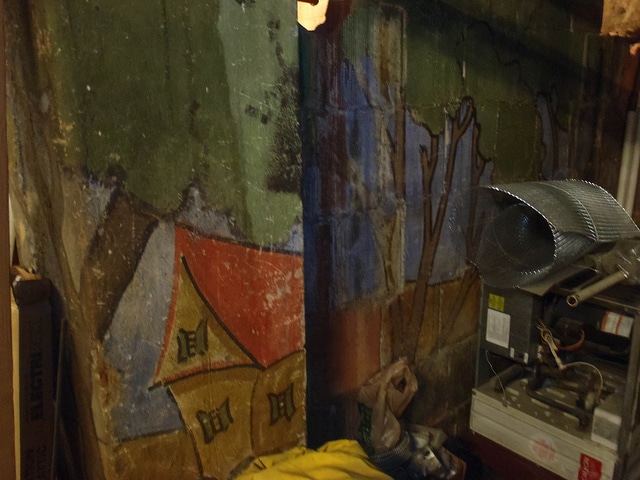
The oldest bar in Downtown Los Angeles still existing today is The Golden Gopher (1905) at 417 West 8th St., Los Angeles, 90014. It was originally purchased by President Teddy Roosevelt as the Golden Sun Saloon. The bar was renovated in 2004 but still keeps the spirit and atmosphere of the era it was built. It doesn’t seem to have a website but is still in operation.
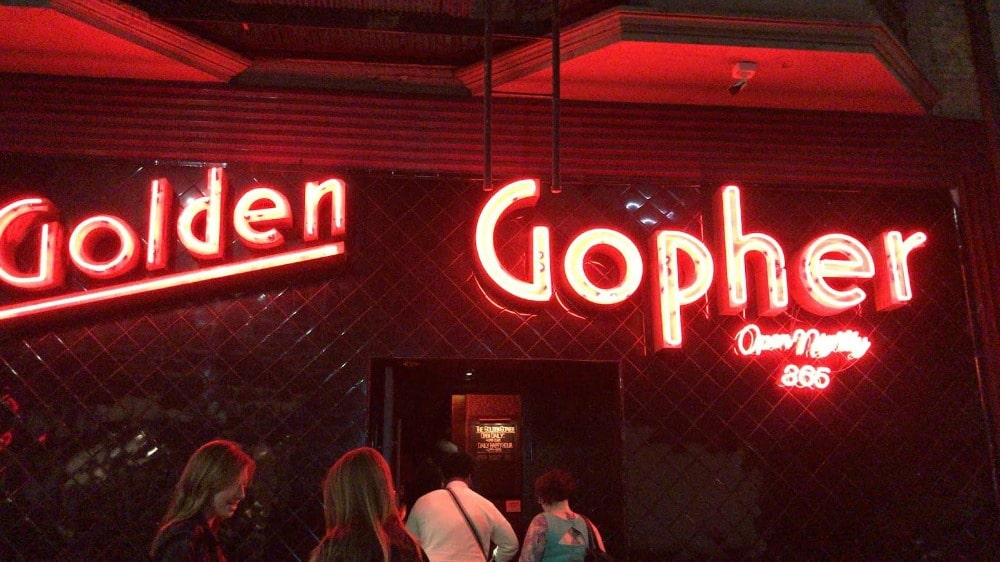
After Prohibition – Depression Era and Tiki Bars
The first period of creative cocktails was a reaction to the Hollywood acting community.
Ernest Raymond Beaumont Gantt worked as a motion picture set designer and would steal set pieces that depicted the South Pacific. He opened the Don the Beachcomber bar and restaurant in 1933 on McCadden Place in Hollywood. It was a Tiki Bar and he kept it stocked with inexpensive West Indian rums.
His motto was:
“If you can’t go to Paradise, I will bring it to you.”
This gave people who were struggling some hope.
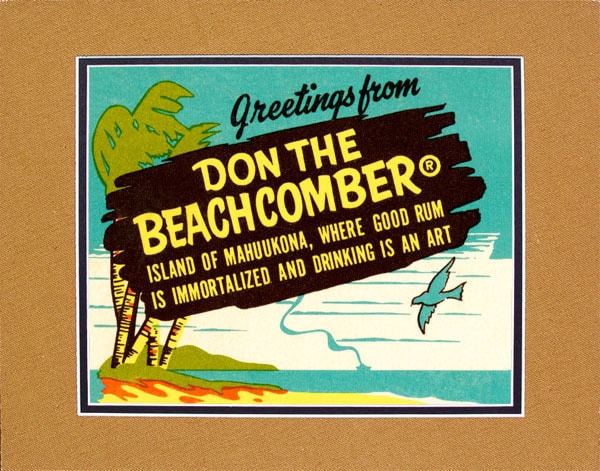
Gantt changed his name to Donn Beach. He only hired Filipino bartenders and paid them as much as their white counterparts. They understood how to mix fruits to create exotic cocktails with names like Mai Tai, Sumatra Kula, and Zombie.
Cornelius Vanderbilt IV was a journalist at the time and brought Charlie Chaplin to Don the Beachcomber. Their patronage helped the restaurant launch and become successful. It later inspired Trader Vics and other Polynesian-themed restaurants and bars.
Ray Buhen was one of its Filipino bartenders and created many of the restaurant’s blended cocktails that became famous. He opened his own restaurant Tiki-Ti in 1961. It still operates at 4427 Sunset Blvd. 90027 in Los Feliz. If you stop in, order a drink called “Ray’s Mistake.”
Clifton’s Pacific Seas opened in 1932 as the Cafeteria of The Tropics. It operated for many years and was another iconic Tiki bar until it closed in 1960.
Another fabulous vintage steakhouse and cocktail lounge still open is The Safari Room (1953) at 15426 Devonshire St, Mission Hills, CA 91345. Try one of their signature Mai Tais. I have eaten there several times and the food is old-school incredible!
The Rosslyn Hotel (1914) at 112 W 5th St, Los Angeles, CA 90013 was the site of an old speakeasy in a marble-lined tunnel beneath 5th Street in Downtown LA. The bar featured windows on two sides with a flamenco dancer painted on glass. It was called “The Monterey Room.” The hotel is said to be haunted. It’s currently being renovated into a home for homeless veterans.
Historic bars to get a cocktail in Los Angeles
Enjoy a dry martini at the famous Musso & Frank Grill (1919) at 6667 Hollywood Blvd, Los Angeles, CA 90028
Have an Irish coffee at Tom Bergin’s (1936) at 840 S Fairfax Ave, Los Angeles, CA 90036
Order an Old-Fashioned at the Hollywood Frolic Room (1930) at 6245 Hollywood Blvd, Los Angeles, CA 90028 next to the Pantages Theater. You can’t miss its colorful neon sign. It started as a speakeasy and was said to be the last place “The Black Dahlia” was seen in LA. Charles Bukowski also hung out there. It was a favorite of Frank Sinatra and Judy Garland. The current lounge was established in 1979.
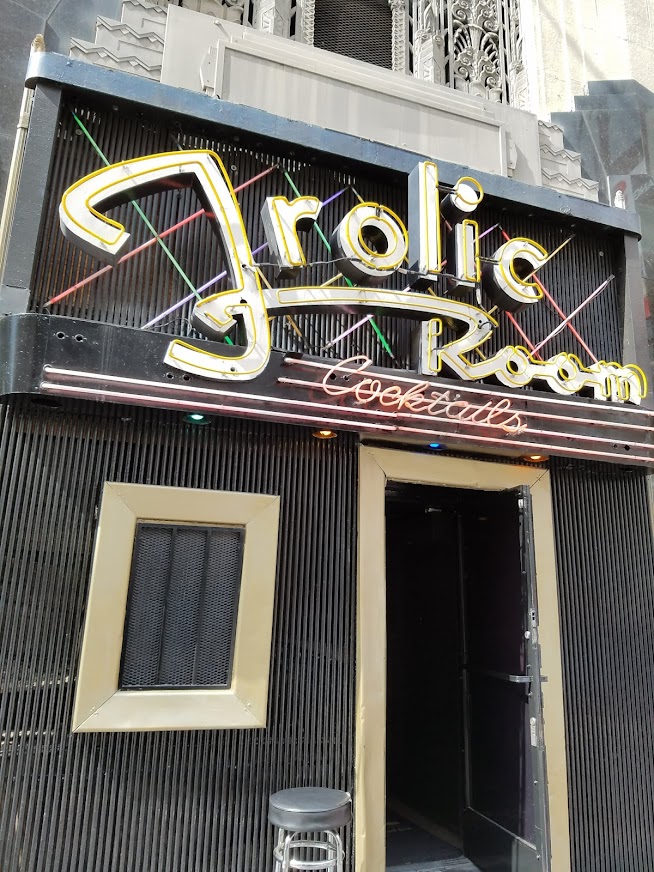
Have a Moscow Mule or an amazing ale at the Tam O’ Shanter Inn (in 1922 ) at 2980 Los Feliz Blvd, Los Angeles, CA 90039.
The Wolves is a bar in Downtown Los Angeles and is located in an annex of the 1906-era Alexandria Hotel which at the time was the most luxurious hotel in the area. Theodore Roosevelt, Mary Pickford, and King Edward VIII stayed there. In 1911, the Palm Court banquet Hall was added to the hotel which is where The Wolves is now located.
The bar opened in 2018 and has a striking domed and stained glass ceiling that was acquired from an Illinois train station along with many vintage pieces. Craft vintage-style cocktails are served along with shareable dishes.
You can find it at 519 S. Spring Street in downtown Los Angeles, 90013.
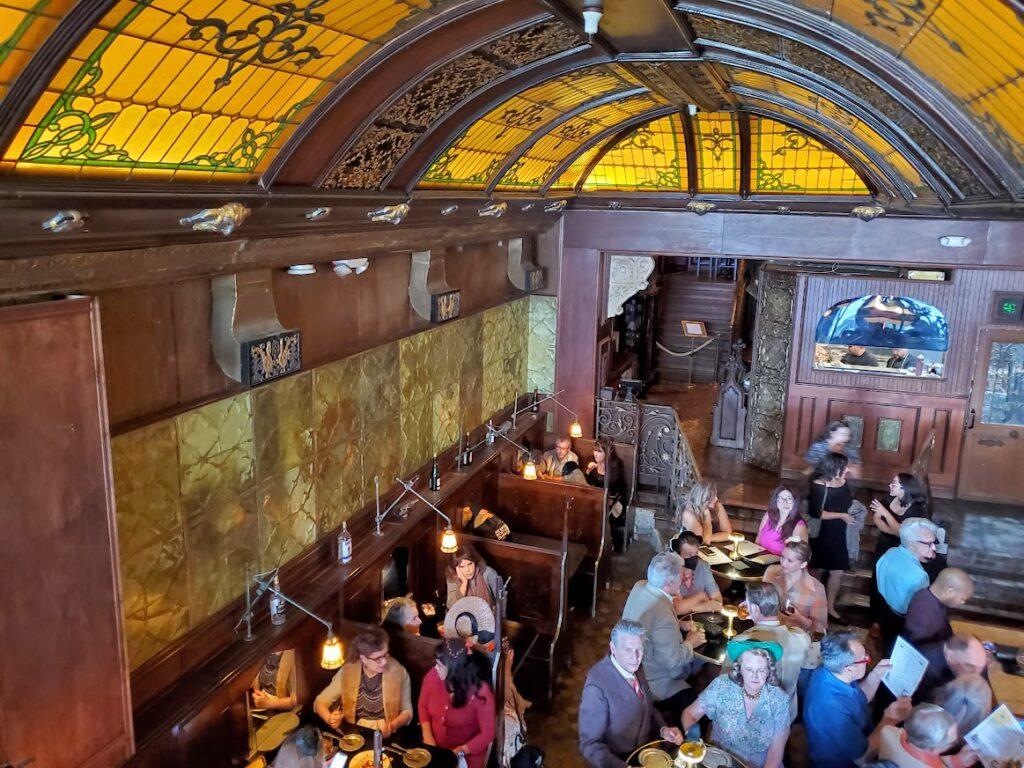
Some of the oldest bars in Los Angeles include:
- Big Dean’s Oceanfront Cafe (1902)at 1615 Ocean Front Walk, Santa Monica, CA 90401
- Alhambra Cocktail Lounge (1904) at 216 W 11th St, San Pedro, CA 90731
- Joe Jost’s (1924) at 2803 E Anaheim St, Long Beach, CA 90804
- El Paseo Inn (1930) at 11 Olvera St, Los Angeles, CA 90012
- The Mint (1937)at 6010 W Pico Blvd, Los Angeles, CA 90035
- Formosa Cafe (1934) at 7156 Santa Monica Blvd, West Hollywood, CA 90046
- Harvelle’s Blues Club (1931) at 1432 4th St, Santa Monica, CA 90401
- Ercole’s Bar (1927) at 1101 Manhattan Ave, Manhattan Beach, CA 90266
Authentic and semi-authentic Los Angeles speakeasies
There are speakeasy-style drinking establishments in Los Angeles. Some are vintage and others are designed to be modern-day speakeasies. They include:
Townhouse ( 1915) at 52 Windward Ave, Venice, CA 90091 – This old nightspot has underground catacombs and caves that were used to transport illegal liquor. The Del Monte Speakeasy is located downstairs. In 1915, it was hidden underneath a grocery store. Booze was wheeled in from the shore through the network of tunnels.
The Varnish at 118 6th St., Los Angeles, 90014 is not an authentic speakeasy, but it’s set in the back of the vintage Cole’s Restaurant (1908). Look for its signature door and logo.
The Edison – (1910) at 108 W 2nd St. Ste 101. Los Angeles, CA 90012 was turned into a modern-day speakeasy. The building has a mix of Art Nouveau and Industrial Gothic designs. The speakeasy is located in the sub-basement of the Higgins Building. It is a fun place to enjoy artisanal cocktails, food, and other libations as well as music in this delightful hideaway. Update 3-2023: The bar is currently being remodeled and is scheduled to reopen on Sept 30, 2023.
Clifton’s Republic at 648 S. Broadway, Los Angeles, CA 90014 is in the former Clifton’s Cafeteria(1931). It was famous as a cafeteria and has a fascinating history but has been turned into a nightclub. It has several bars inside including a recreation of the old Pacific Seas Tiki Bar. Open Thursday – Sat 8 pm – 2 am.
I used to live in Beachwood Canyon near the Hollywood sign. There was a house on my street that used to be a speakeasy. Several homes up there and in other canyons were used to store hooch because the areas were relatively remote. Gangster Bugsy Siegel opened a speakeasy around 1938-39 at the Castillo del Lago mansion on Hollywoodland’s Durand Drive. Madonna bought it in 1993 and lived there while filming Evita.
Historic Los Angeles Hotel Bars
Los Angeles has several early 20th-century-era hotels with cool lounges if you want to enjoy a cocktail in Los Angeles.
- Hollywood Roosevelt (1927) at 7000 Hollywood Blvd, Los Angeles, CA 90028. It was the home of the first Academy Awards ceremony. The Library Bar serves handcrafted and unusual mixed drinks. Teddy’s Bar is where you can get a Moscow Mule, Manhattan, and Old Fashioned.
- Millennium Biltmore (1923) at 506 S Grand Ave, Los Angeles, CA 90071. Relax at the Gallery Bar and Cognac Room. It has a drink named after The Black Dahlia made with citrus vodka, Chambord, and Kahlua.
- Chateau Marmont (1929) at 8221 Sunset Blvd, Los Angeles, CA 90046. Mingle with celebrities at the Bar Marmont. It has a secret cocktail menu that features the Moscow Mule and Boulevardier.
- Beverly Hills Hotel (1912) at 9641 Sunset Boulevard Beverly Hills, California 90210. Sip a Gibson in The Polo Lounge
- The Ace Hotel (1927) at 929 S Broadway, Downtown Los Angeles, CA 90015. It is located in the historic United Artists Building. Have a cocktail in the upstairs rooftop bar for a lovely view. It also has multiple bars inside the theatre.
This post was updated on 12/2023.

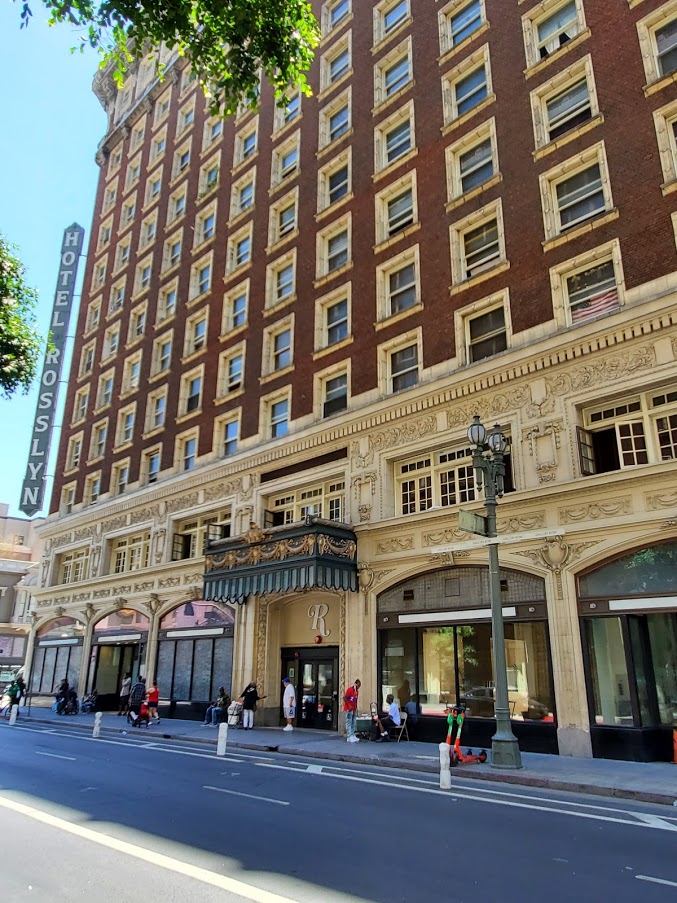
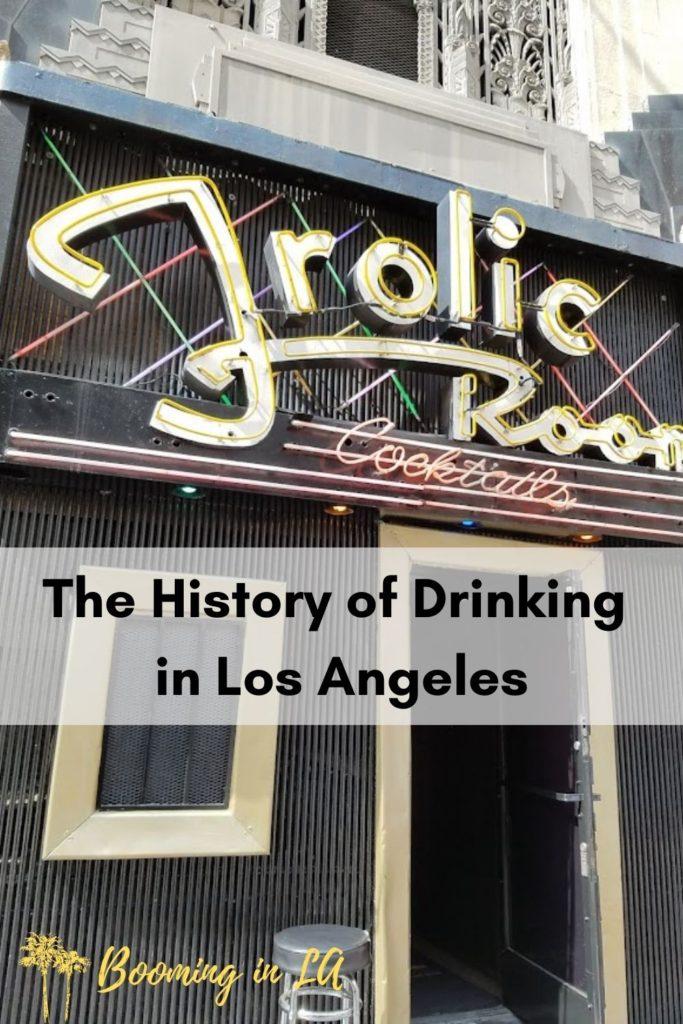
This must have been such a fun piece to research and write! And who knew there was such history in LA? Thanks for sharing all you learned.
Thanks Roxanne. It was lots of fun. I found out about it at the last minute and was glad I went.
Roxanne – You have no idea how much history there is in L.A. – We’ve got tons of it (heck, we were founded in 1781).
That’s so true. And it’s fun to find out about it.
What an interesting post! So much history and a lot of wonderful information in that post. Thanks. 🙂
Thanks Lisa. I’m so glad you enjoyed it!
Always love a good piece on booze history! Well done!
Thanks Sasha – A little booze now and then can’t hurt. LOL
I got to hear Foss do the talk last October at the L.A. As Story Archives Bazaar. Foss may not know about it, but there’s a lovely winery in the Santa Ynez valley called Gypsy Canyon that makes and sells angelica from 75-year-old vines. Even better (and pray forgive the brag), but my husband just made some angelica from fruit he harvested off the vines at Olvera Street. He and some other guys are now working on getting those vines into better shape – they’re only 150 years old. We only got about three gallons this year. Hope to get more next year.
Hi Anne,
What wonderful information. I didn’t know there were still grapevines on Olvera Street. How cool! Now I want to go down there and check it out. And how interesting about the angelica that your husband and Gypsy Canyon is making. Thanks for stopping by.
Rebecca
Great information. Thanks. My husband is a wine nut and we have traveled to Sonoma, Napa, but your information is brand new. Love all the photos that you added to the text. The tunnel is weird! The love of alcohol can fuel a lot of building and ideas. Thanks Rebecca.
Thanks Beth,
I honestly didn’t know that the wine industry started in Los Angeles either until the lecture I attended. Glad you liked the pics too. I don’t live far from Mission San Fernando and I was so happy to see they were displaying the wine vats.
Rebeca
What a fun post! Oh, the good ole days. I can’t even imagine what Prohibition must have been like. Interesting history to it all.
Thanks Carol. I guess I’ve always been obsessed with the roaring twenties. It was such a fascinating time.
What a great piece Rebecca! I love California wines and did not know that the first California wines were Mission Wines. That sounds like a tour (pilgramage?) worth making. Join me?
I didn’t know either until I attended the lecture. I always assumed winemaking starting up by Napa.
You see all of those old movies set in LA with speakeasy’s but I’ve never given it much thought so this is fascinating!!! Who knew?
I know. Right? There are so many interesting little spots in LA, especially because of the film biz. It’s fun when you find them.
An interesting look at wine history in Cali!
Thanks, Tam. Who knew?
The Library Bar sounds like the place for me! Books and booze! What could be better?
I can imagine such an event would indeed make one loopy. But how fun!
Thank you for sharing.
Cheers!
Boozing in the Library does sound rather nice. Thanks Lisa.
WOW, I never knew any of this history. This blog was fascinating. Next time I am in LA, I shall def have the smartest sounding cocktail conversation. Many of us are still using wine as medicine today!!!
Wine as medicine is good too Ellen. Works for me! LOL. Glad you liked the post.
What a fun event! I’m a gin girl, so you had me at The Bang! Very interesting post. Had no idea that the wine industry started in LA!
The Bang was pretty interesting to try. Lots of ginger in it. Good for a hangover. LOL
Wow, what a fascinating history. I had no idea that LA played such a big role in the industry. Bet you had fun researching this at the event!
Thanks Lois. It was a blast, plus they poured lots of cocktails so we were all having fun.
wow! what a full on experience – so glad you enjoyed it. I’m not a drinker but those cocktails sounded really interesting and I bet the food was delicious!